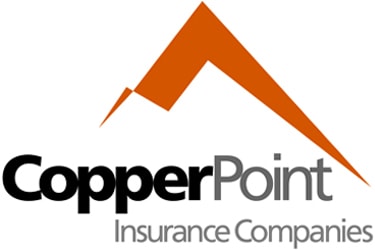Author: Anel Henry,
Risk Management Executive of
Alaska National, A CopperPoint Insurance Company
As businesses across the country continue to reopen after temporary closures due to the COVID-19 pandemic, they’re all wondering the same thing: How do we reopen safely?
It’s a complex answer, but the Centers for Disease Control and Prevention (CDC) says there are basic precautions any business can take to reduce the risk of exposure to coronavirus for employees and customers. Their “Resuming Business Toolkit” is a good online resource designed to assist employers who are ready to resume business.
Here are some of the top considerations to keep in mind.
- Be Prepared: Before you open your front door, it’s important to make sure you’re ready to maintain a safe environment. This includes developing policies and procedures to protect employees, such as:
- Disease prevention guidelines: Make sure your employees are aware of any special COVID-19 guidelines you implement, such as:
- Frequent hand washing
- PPE (personal protective equipment) or face coverings – depending on your industry this could vary from respirators to medical grade masks to cloth face coverings
- Covering coughs and sneezes
- Maintaining six feet between workspaces and in common areas
- Staggered meal periods and breaks
- Using online meeting platforms and other measures
- Cleaning and sanitizing protocol: The CDC recommends frequent cleaning and sanitizing of high-touch surfaces to help prevent the spread of the coronavirus. Identify someone within your organization to develop, implement, and maintain a plan for this important disease-prevention measure. Encourage employees to:
- Disinfect desks, door and drawer handles, computers, elevator buttons, keyboards, phones and shared work equipment, such as printers, throughout the day
- Consider upgrading high contact points to touchless technology
- Health policy: Make sure employees know they should stay home if they or a member of their household is experiencing COVID-19 symptoms, or had recent close contact with someone who tested positive. Create an action plan for what to do in the event an employee becomes sick with COVID-19, including contact tracing and sanitizing the workspace.
- Be Flexible: Even though you are opening, it doesn’t mean all your employees will feel comfortable coming into the workplace, especially those with preexisting conditions, which may be at higher risk of complications from COVID-19. Talk to your human resources team to ensure that you have supportive leave policies in place for your employees and be sure they are communicated to staff.
Also, some employees may be working successfully from home. If possible, consider letting them continue to work remotely for the time being to reduce the number of on-site employees in the workplace.
- Consider Your Unique Business: While the general guidance above is helpful for every business, some organizations need to customize their health and safety practices for their specific needs.
For example, if you work in a retail setting, this may mean encouraging customers to wear masks and use hand sanitizer before and after shopping. You may also consider capping the number of shoppers you allow in your store at a given time.
In an industrial setting, there are even more factors to consider if employees must work close to each other for prolonged periods. Depending on your industry, this could mean anything from supplying employees with personal protective equipment, such as N95 respirators, to sequestering entire teams of essential workers.
- Monitor the situation: The COVID-19 pandemic continues to evolve. Be sure to monitor the situation carefully and adjust your plans according to any new guidelines issued by public health agencies. The CDC has recently issued new guidance on when an individual should discontinue isolation and return to work.
Putting health and safety at the forefront during this time will help ensure your reopening is successful. By creating a safe environment for employees and customers, you’ll keep your business moving forward while reducing your risk of liability—a win-win.
About the Author:
Anel Henry is a Risk Management Executive with Alaska National, a CopperPoint Insurance Company. She began her professional career in workers’ compensation in 1994. She has occupied various industry roles, to include loss control, claims management, and self-insured group administration. As a Risk Management Executive, she engages policyholder decision-makers and broker partners to provide the motivation behind enterprise risk management recommendations and achieve alignment.
быстрые займы на карту займ на киви с 18 летзайм центрофинансонлайн займ без проверок займ без отказа с плохой киманей сто займvivus.ru займ займ на карту срочно до 50000займ под птс новокузнецкзайм без паспорта срочно


